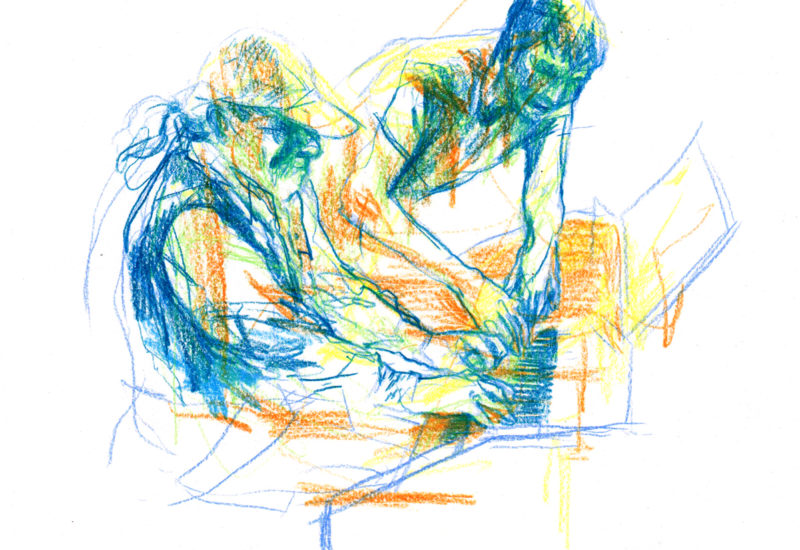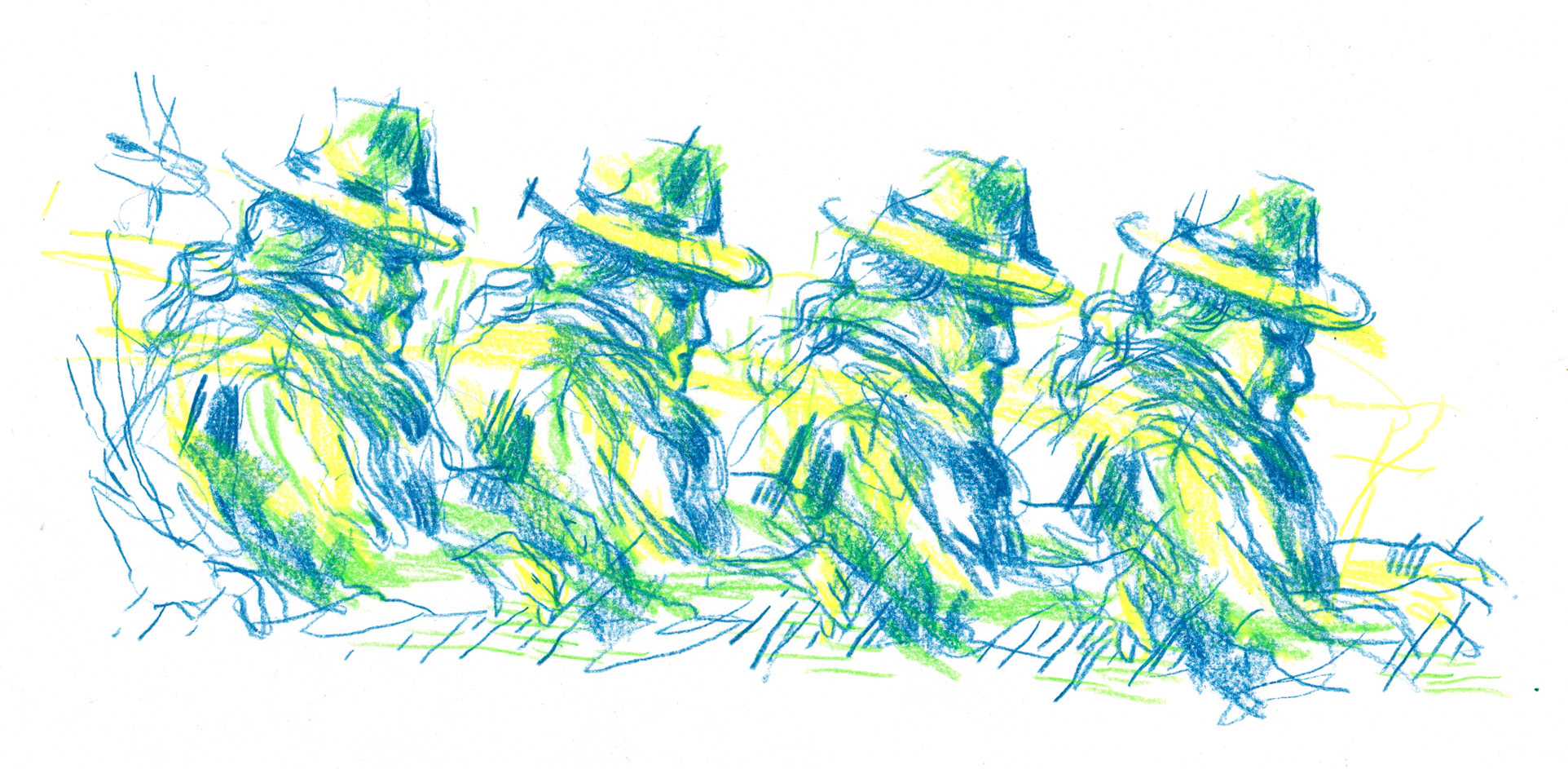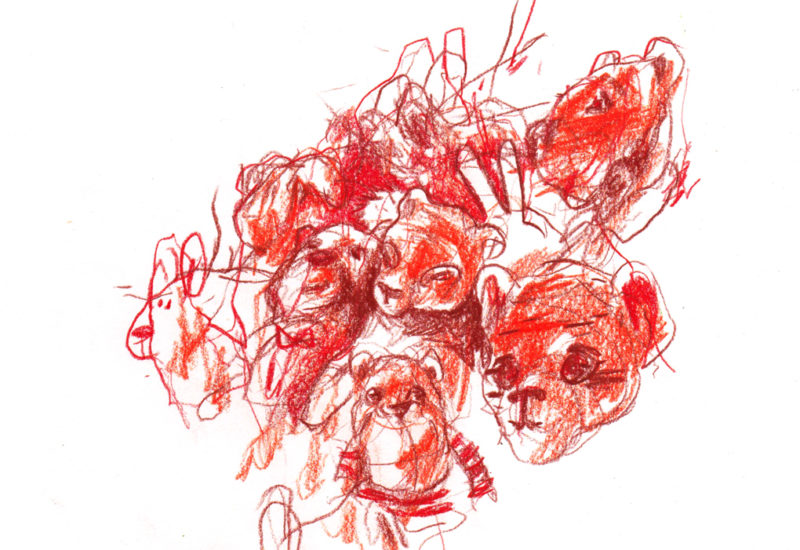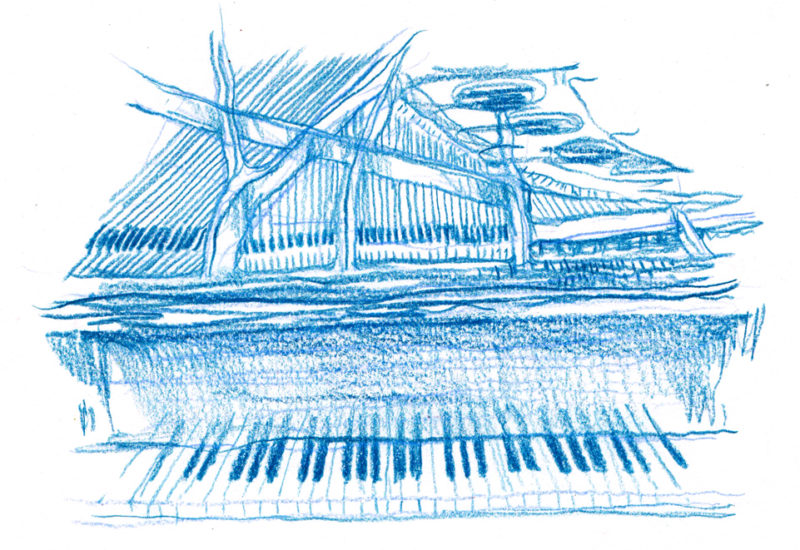Carte Blanche | Romain de Ferron talks about Charlemagne Palestine
Correspondance(s) is the projects and stories of Le Périscope illustrated through the eyes of the author Coline Llobet. For this season, we are starting a series of Cartes Blanches that will invite artists from our artistic scene to reveal a work, an event, or a personality that has marked their journey as a musician. We are very happy to launch this series with a carte blanche given to Romain de Ferron, on the occasion of his concert of October 26, 2021, who presents us today Charlemagne Palestine, an extraordinary musician with whom Romain de Ferron has a special relationship.

I think the first time I heard Charlemagne Palestine’s music and more particularly his record “Strumming Music” was at the Faï farm in the Hautes Alpes. Up there we have been building for several years with friends a rather particular sound system that sounds very well with his music.
At the end of my degree I decided to do my master’s research on him. I have always been fascinated by continuous sounds and repetition in music. My dissertation was naturally directed towards the American minimalist movement (Terry Riley, La Monte Young, Steve Reich …). I think that the radical and iconoclastic side of Charlemagne Palestine seduced me. He is an artist with a lot of humor who made fun of the seriousness of scholarly music, which fits well with me I think.
When he came to the Couvent de la Tourette near Lyon in 2013 I had the chance to meet him and play briefly with him.
His music is very corporeal, he sometimes made his hands bleed while hammering the keys of his piano for his pieces that he calls Strumming. Most of his pieces are a pile of frequencies, never much more than a dozen on pieces lasting generally around one hour. So it’s very clean and very repetitive. However I have rather the image of a generous and abundant music. A bit like a big waterfall that you watch flowing: it’s a bit always the same but always slightly different (I think it was Steve Reich who made a similar comparison with music and waves).

In addition to being a musician he is also a visual artist and performer. During his concerts he mixes these practices by integrating for example some kind of sculpture decoration around teddy bears (one of his obsessions).
Meeting him and listening to his records for hours during my dissertation had a big impact on me, and for a long time I think my solo music had a hard time becoming independent. Some traits persist. For example the idea of stretching a musical idea as far as possible, as if to put it on the flat, like pulling very long threads. Superimposing frequencies and looking at their interactions, and in particular using as he often does a stack of second intervals. Recently I also realized that on some pieces I was adapting his Strumming technique by hammering the keys of my little synthesizer (which is quite paradoxical because he used for his Strumming technique a very specific model of piano which is particularly imposing, the Bosendorfer Imperial).


He considers his music more like that, I think, refusing the name minimalist and preferring the name maximalist. He told me that for him the minimalist evoked people who don’t give tips. Also he often talks about his search for the “golden sound”.
“I wanted to find in the sound a field bathed in color, a sanctuary of color, a sound without end.“
Charlemagne Palestine is (co)responsible for another very important aspect in my life. Like many musicians of this time, and particularly the minimalists, he was very interested in Balinese and Javanese gamelan music. His journey led him to go on a study trip to Bali for a month. While researching Charlemagne Palestine I immersed myself in Indonesian music and I fell completely into it. And I continued to feed this obsession by having the chance to travel and study in Indonesia several times during the last years.